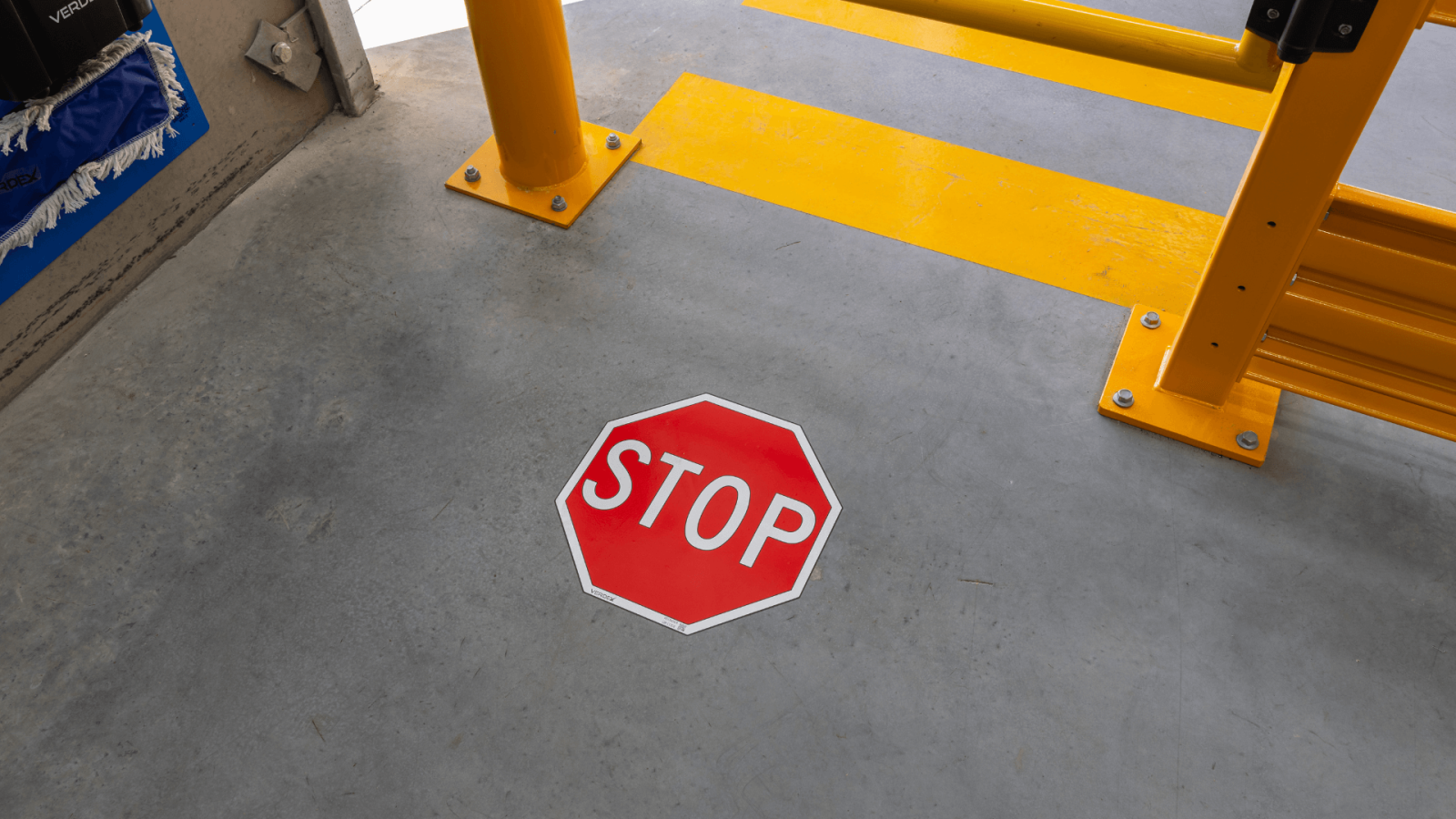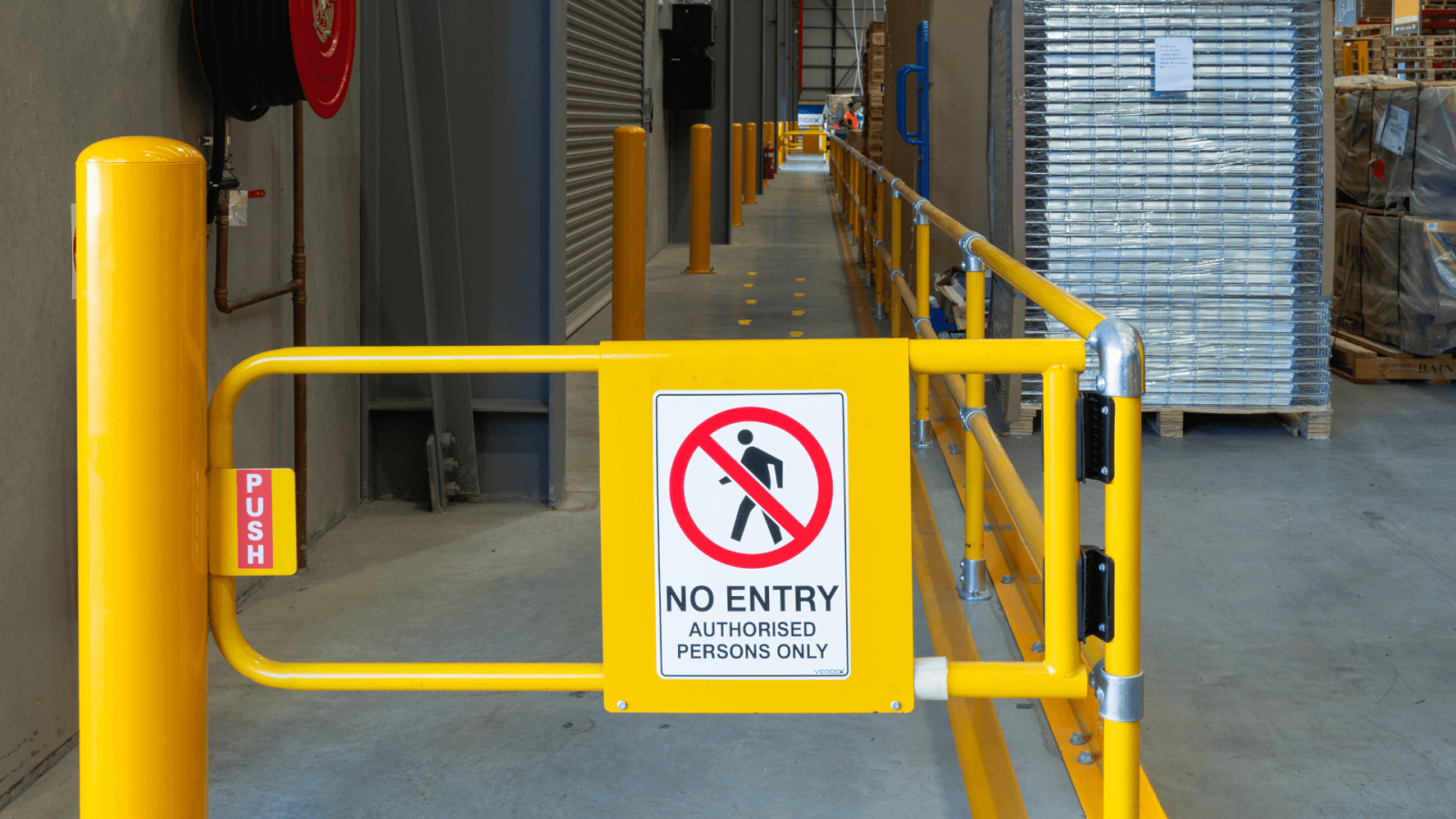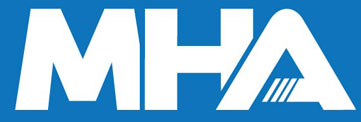Workplace Safety Signs, Symbols and Their Meanings
Date Posted:24 July 2025
Discover what each type of safety signage used in workplaces really means and where they are typically positioned.
Verdex Insights: At a Glance
-
The Challenge: Many workplaces fail to maintain consistent and compliant safety signage, leaving staff and visitors unaware of key hazards or emergency procedures. Faded, misplaced, or non-standard signs can quickly lead to confusion, incidents, or WHS breaches.
-
The Insight: Effective safety signage provides instant, universal communication that saves time and prevents accidents. Following the Australian Standard AS 1319:1994 ensures every sign (from warning and danger signs to emergency exits) meets visibility, colour, and material requirements for its environment.
-
The Verdex Solution: Verdex supplies AS 1319-compliant workplace signage across all major categories, designed for warehouses, factories, logistics, and construction sites. Manufactured from durable materials like aluminium, polypropylene, and corflute, our signage integrates with PPE programs, first aid equipment, and safety barriers to support full WHS compliance and a safer, more organised workplace.
Why Safety Signage Is Essential in Australian Workplaces
Safety signage is more than just a legal requirement, it’s a critical part of your safety management system. Under Safe Work Australia’s Work Health and Safety (WHS) regulations, employers are obligated to provide visual warnings and instructions that match the risks present in the environment.
Clear signage helps prevent injury, control hazards, and support swift emergency responses. It plays a vital role in guiding behaviour, especially in high-risk or high-traffic areas such as warehouses, construction zones, factories, and logistics depots.
Whether you're communicating a simple instruction or highlighting a life-threatening danger, workplace safety signage and information signs ensure both workers and visitors can quickly understand the expectations and risks of each area, promoting a culture of compliance and care.
Main Categories of Workplace Safety Signage
Australia's workplace signage standards are governed by AS 1319:1994, which outlines specific categories of safety signs. Here's a breakdown of the main types you’ll find across Australian worksites, with guidance on how and where to use them.
1. Mandatory Signs
Mandatory signs are blue and white, indicating actions that must be taken. Examples include “Hearing protection must be worn” or “Safety harness required”.
These signs are common in:
-
Construction zones
-
Chemical storage areas
-
Manufacturing plants
-
Welding bays or PPE-required areas
They help enforce safe behaviour and are vital in ensuring compliance with PPE protocols and safe operating procedures. Ignoring mandatory signage can result in legal penalties and increase the risk of preventable injuries.
Examples of 'Mandatory' Signage We Supply
2. Prohibition Signs
These signs feature a red circle with a diagonal slash, indicating that something is not allowed, such as “No smoking”, “Do not enter”, or “No mobile phones”.
You’ll find these:
-
Around hazardous materials
-
In plant rooms and electrical cabinets
-
At the entrances of restricted or high-security zones
They help control behaviour and access, protecting both staff and sensitive equipment. Prohibition signage also plays an important role in ensuring that emergency procedures aren't compromised by careless actions.
Examples of 'Prohibition' Signage We Supply
3. Warning Signs
Warning signs are easily recognisable by their yellow background with black text and symbols. They signal potential hazards that could cause injury if not observed, like “Forklifts operating” or “Slippery surface”.
Key placement areas include:
-
Warehouse aisles
-
Loading docks
-
Shared zones between pedestrians and machinery
-
Areas prone to spills or debris
Warning signs are vital for alerting workers to general hazards that may not be immediately visible. They create situational awareness and reduce the chance of accidental injury.
Examples of 'Warning' Signage We Supply
4. Emergency Information Signs
Emergency signs are green with white text or symbols and are used to highlight locations of emergency equipment or exits. Common examples include “First Aid Kit”, “Emergency Exit”, or “Assembly Point”.
These signs must be visible:
-
Near first aid stations and defibrillators
-
At all exit points
-
In fire safety equipment zones
-
Throughout high-occupancy facilities
They support emergency planning and assist first responders in quickly finding the resources they need. Emergency signage is a mandatory component of evacuation plans and WHS audits.
Examples of 'Emergency Information' Signage We Supply
5. Danger Signs
Danger signs combine red, black, and white and are used to indicate life-threatening hazards that could cause death or serious injury. Examples include “High voltage”, “Confined space”, and “Explosive gas”.
These signs are typically placed in:
-
Electrical control rooms
-
Confined space entry points
-
High-voltage switchboards
-
Areas with hazardous gases or pressure systems
Using danger signs appropriately is crucial in environments where even minor mistakes could lead to serious consequences. They carry a stronger legal and psychological impact than warning signs and must not be misused.
Examples of 'Danger' Signage We Supply
6. Directional or Wayfinding Signs
These include arrows, instructions, or symbols that help guide traffic safely around the site. They might say “Delivery Entrance”, “Visitor Parking”, or “Staff Only”.
Important locations include:
-
Carparks and driveways
-
Multi-building facilities
-
Emergency assembly areas
-
Complex warehouse layouts
Directional signs reduce confusion, enhance emergency egress, and contribute to efficient site navigation for staff, visitors, and contractors alike.
Examples of 'Directional or Wayfinding' Signage We Supply
Choosing the Right Sign for the Right Zone
Selecting the correct sign involves more than just choosing a message. To remain WHS compliant, signage must match the level of risk, comply with AS 1319:1994, and suit the environmental conditions.
For example:
-
Indoor signs may be printed on corflute or PVC
-
Outdoor signs often require aluminium with UV protection or self-adhesive backing for rough surfaces
At Verdex, we supply a wide range of workplace signage options, including aluminium, corflute, polypropylene, and adhesive signs, tailored for durability, clarity, and compliance.
How Often Should Workplace Signs Be Checked or Replaced?
Safety signs are only effective if they are visible and legible. We recommend conducting signage audits every 6 to 12 months, especially in high-wear or high-risk zones.
You should replace any signs that are:
-
Faded from UV exposure
-
Damaged from impacts or weather
-
No longer relevant due to process or layout changes
Unclear or missing signage can lead to serious WHS breaches and increased risk of injury. Regular reviews ensure your safety communication remains up to standard and reflects current workplace operations.
Need Compliant Safety Signage? Contact Verdex
At Verdex, we supply high-quality, compliant safety signage tailored for Australian workplaces. Whether you operate a warehouse, factory, office, or multi-site facility, we’ve got the signage solutions to keep your team safe and your site WHS-compliant.
We also equip businesses with quality workplace safety equipment and supplies such as:
Get in touch with our team today to discuss your signage needs. Feel free to contact us by emailing us at sales@verdex.com.au, or filling out our contact form.
Frequently Asked Questions
What are the legal requirements for safety signage in Australia?
Under WHS laws and AS 1319:1994, employers must provide appropriate signage that clearly communicates risks, actions, and emergency procedures. These signs must be positioned where they're needed most and be well maintained.
Do I need different signs for indoor and outdoor use?
Yes. Outdoor signs must be weather-resistant and UV-stable, while indoor signs can be printed on lighter materials like corflute or polypropylene. Material selection ensures longevity and clarity in the intended environment.
How many signs does a warehouse typically need?
This depends on warehouse size and risk profile. Common placements include entry/exit points, forklift zones, pedestrian walkways, emergency exits, PPE areas, and hazard zones. A safety audit can determine your exact needs.
What’s the difference between a warning sign and a danger sign?
A warning sign alerts you to a potential hazard (e.g., “Watch for forklifts”). A danger sign indicates a severe hazard that could cause serious injury or death (e.g., “High Voltage”). Danger signs carry a stronger legal implication.

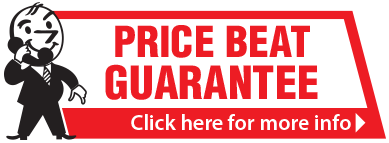






























































































































 Trolleys & Hand Trucks
Trolleys & Hand Trucks Cage Trolleys
Cage Trolleys Cleaning Carts & Trolleys
Cleaning Carts & Trolleys Construction Trolleys
Construction Trolleys Custom Trolleys
Custom Trolleys Hand Trucks & Dollies
Hand Trucks & Dollies Laundry/Linen Trolleys
Laundry/Linen Trolleys Lifting Trolleys
Lifting Trolleys Order Picking Trolleys
Order Picking Trolleys Panel Cart Trolleys
Panel Cart Trolleys Platform Trolleys
Platform Trolleys Powered Trolleys
Powered Trolleys Shelf & Tiered Trolleys
Shelf & Tiered Trolleys Shopping Trolleys
Shopping Trolleys Stainless Steel Trolleys
Stainless Steel Trolleys Tool Trolleys
Tool Trolleys Utility & Service Carts
Utility & Service Carts Lifting & Handling Equipment
Lifting & Handling Equipment Forklift Attachments
Forklift Attachments Jib Attachments
Jib Attachments Lifting Hoists & Pallet Hooks
Lifting Hoists & Pallet Hooks Load Skates & Tow Tugs
Load Skates & Tow Tugs Manual Stackers & Lifters
Manual Stackers & Lifters Pallet Jacks
Pallet Jacks Pallet Lifters
Pallet Lifters Pallet Rotators & Dispenser
Pallet Rotators & Dispenser Powered Pallet Trucks & Electric Lifters
Powered Pallet Trucks & Electric Lifters Scissor Lift Trolleys and Tables
Scissor Lift Trolleys and Tables Conveyor Equipment
Conveyor Equipment Conveyor Frames & Stands
Conveyor Frames & Stands Roller & Skate Conveyors
Roller & Skate Conveyors Ladders & Access Equipment
Ladders & Access Equipment Container & Yard Ramps
Container & Yard Ramps Ladders & Step Stools
Ladders & Step Stools Work Platforms & Crane Cages
Work Platforms & Crane Cages Drum Handling Equipment
Drum Handling Equipment Drum Storage & Bunding
Drum Storage & Bunding Drum Trolleys & Lifters
Drum Trolleys & Lifters Forklift Drum Handling
Forklift Drum Handling Waste Handling & Bins
Waste Handling & Bins Bin Lifters & Tippers
Bin Lifters & Tippers Plastic Waste & Wheelie Bins
Plastic Waste & Wheelie Bins Steel Waste & Tipping Bins
Steel Waste & Tipping Bins Waste Carts
Waste Carts Dangerous Goods Storage & Spillage
Dangerous Goods Storage & Spillage Aerosol Cans Storage Cages
Aerosol Cans Storage Cages Bunded Pallets & Storage
Bunded Pallets & Storage Corrosive Goods Storage Cabinets
Corrosive Goods Storage Cabinets DG Storage & Trolleys
DG Storage & Trolleys Flammable Liquid Cabinets
Flammable Liquid Cabinets Forklift Gas Storage Cages
Forklift Gas Storage Cages Site Storage
Site Storage Spill Kits
Spill Kits Shelving & Storage Equipment
Shelving & Storage Equipment Stillage & Transport Cages
Stillage & Transport Cages 750 Series Cage Configurations
750 Series Cage Configurations Heavy Duty Cabinets
Heavy Duty Cabinets Heavy Duty Shelving
Heavy Duty Shelving Mega Bins & Pallets
Mega Bins & Pallets Packing & Workbenches
Packing & Workbenches Parts Trays & Stor-Pak Bins
Parts Trays & Stor-Pak Bins Pegboard & Louvre Panels
Pegboard & Louvre Panels Plastic Bins & Crates
Plastic Bins & Crates Plastic Handling Solutions Bins
Plastic Handling Solutions Bins Plastic Pallets
Plastic Pallets Stack & Nest Bins
Stack & Nest Bins Pallet Racking Accessories
Pallet Racking Accessories Workplace Equipment
Workplace Equipment Modular Workbenches
Modular Workbenches Electric Height-Adjustable Workbenches
Electric Height-Adjustable Workbenches Floor Matting
Floor Matting General Workplace Equipment
General Workplace Equipment Industrial Weighing Scales
Industrial Weighing Scales Packaging Machinery
Packaging Machinery Stationery Cupboards
Stationery Cupboards Storage and Stillage Cages
Storage and Stillage Cages Tool Trolleys
Tool Trolleys Tooling Cabinets
Tooling Cabinets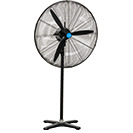 Workshop Fans and Coolers
Workshop Fans and Coolers Safety Barriers, PPE & Signage
Safety Barriers, PPE & Signage Barriers & Bollards
Barriers & Bollards First Aid Equipment
First Aid Equipment Gloves, Knives and PPE
Gloves, Knives and PPE Signage
Signage Cleaning & Site Supplies
Cleaning & Site Supplies Cleaning Equipment
Cleaning Equipment Cleaning Trolleys
Cleaning Trolleys Rubbish Bins
Rubbish Bins Signs & Traffic Supplies
Signs & Traffic Supplies Construction Equipment
Construction Equipment Construction Trolleys
Construction Trolleys Waste Handling
Waste Handling General Site Equipment
General Site Equipment Concrete Equipment
Concrete Equipment Site Storage
Site Storage Lifting Equipment
Lifting Equipment Verdex Specials
Verdex Specials
